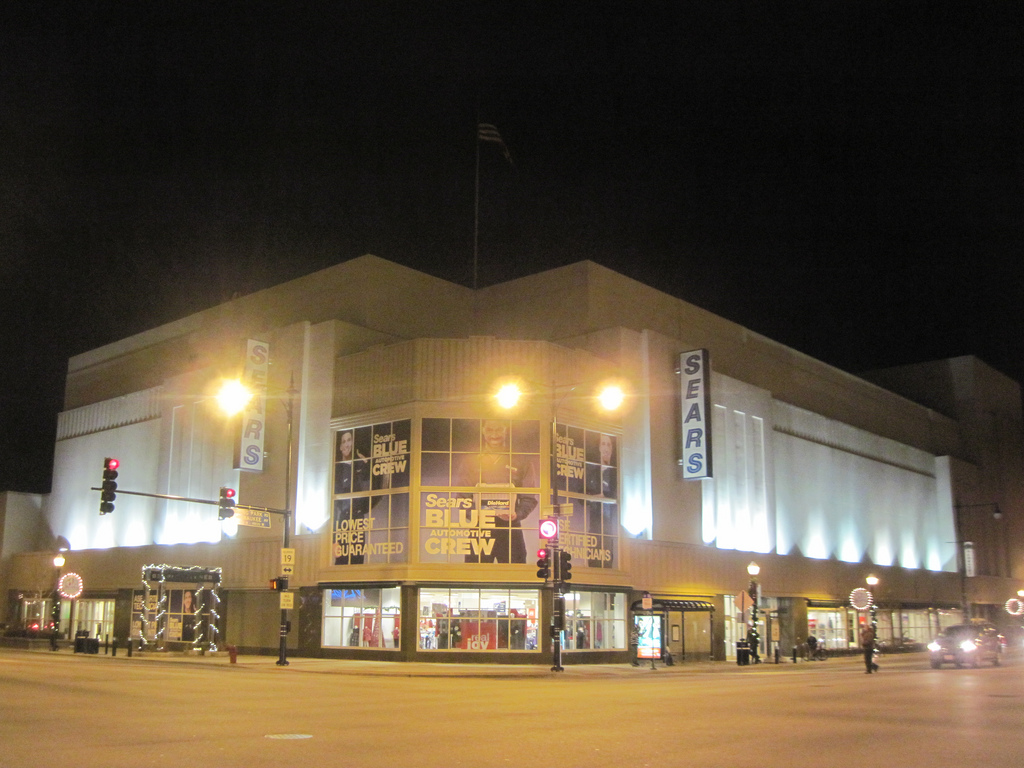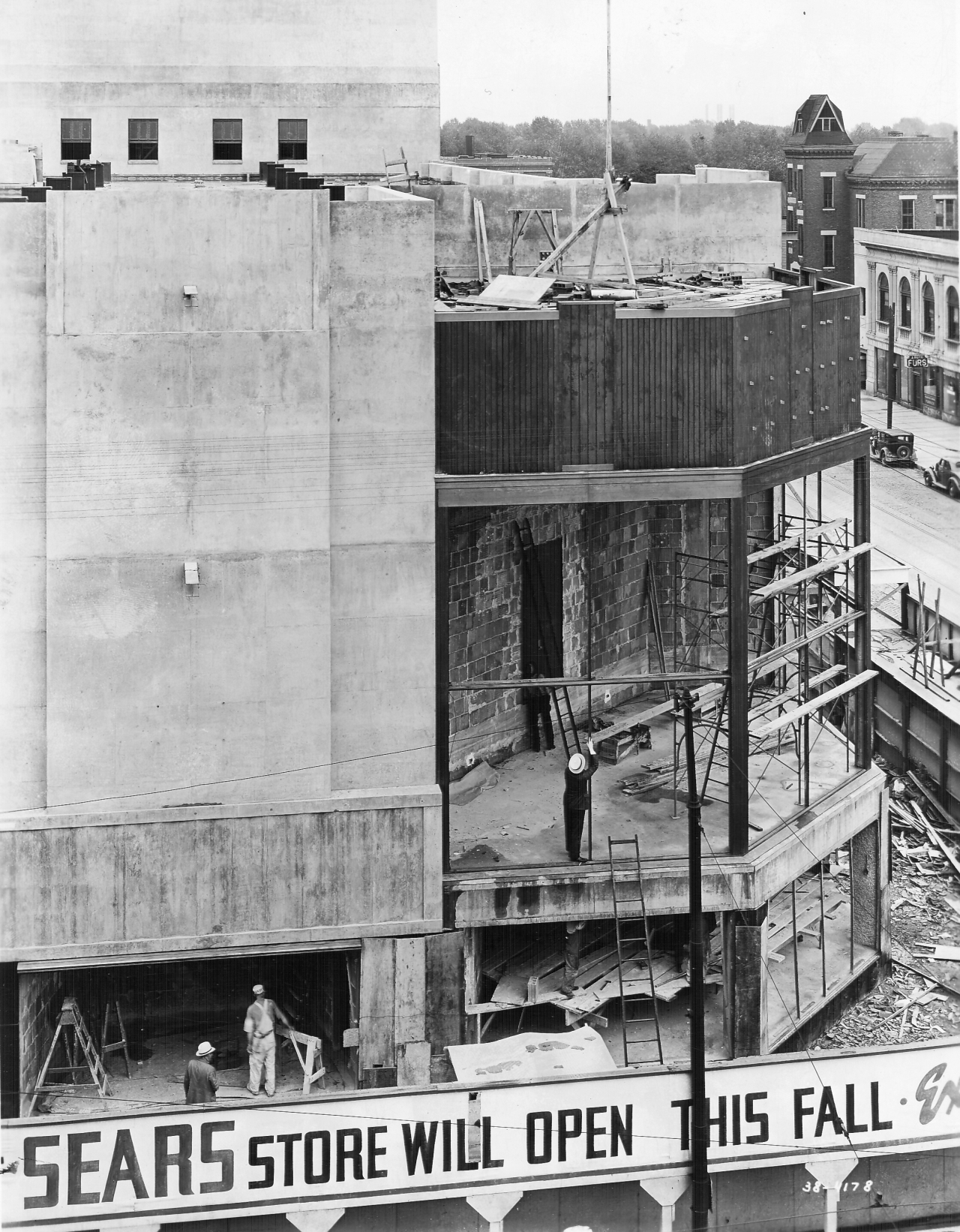This particular Sears opened in 1938 with over 100,000 people visiting it during its 1st day. The store was located at the intersection of Irving Park Road, Cicero Avenue, and Milwaukee Avenue known as Six Corners and situated on the edge of the Portage Park Community. Hillman’s grocery was located in the basement. Hillmans later moved across the street and the Sears expanded. It was a prosperous store and offered many amenities including the customary auto repair garage and the largest window display in the city outside the Loop. A little history of the Portage Park area. The community was located on the northwest side of Chicago. We did not locate there until the fifties near Byron Street and Lamon Avenue which was an easy walk to Six Corners and this
Topics:
run75441 considers the following as important: Journalism, US/Global Economics
This could be interesting, too:
Joel Eissenberg writes How Tesla makes money
Angry Bear writes True pricing: effects on competition
Angry Bear writes The paradox of economic competition
NewDealdemocrat writes Constitutional Interregnum
 This particular Sears opened in 1938 with over 100,000 people visiting it during its 1st day. The store was located at the intersection of Irving Park Road, Cicero Avenue, and Milwaukee Avenue known as Six Corners and situated on the edge of the Portage Park Community. Hillman’s grocery was located in the basement. Hillmans later moved across the street and the Sears expanded. It was a prosperous store and offered many amenities including the customary auto repair garage and the largest window display in the city outside the Loop.
This particular Sears opened in 1938 with over 100,000 people visiting it during its 1st day. The store was located at the intersection of Irving Park Road, Cicero Avenue, and Milwaukee Avenue known as Six Corners and situated on the edge of the Portage Park Community. Hillman’s grocery was located in the basement. Hillmans later moved across the street and the Sears expanded. It was a prosperous store and offered many amenities including the customary auto repair garage and the largest window display in the city outside the Loop.
A little history of the Portage Park area. The community was located on the northwest side of Chicago. We did not locate there until the fifties near Byron Street and Lamon Avenue which was an easy walk to Six Corners and this Concrete Sears or to catch a bus to Logan Square where the L stopped originally. The L would become a subway and took passengers to the “Loop” where the trains made a circle (hence the Loop) and headed back out to Logan Square. I would later take the electric buses (called green hornets due to the antenna extending from the top of the bus to the power lines) to Addison Avenue and catch diesel or propane buses to Lane Technical High School situated next to Riverview an amusement park. We could watch them test the roller coasters before they opened up for the season. Riverview closed and is now occupied by a large shopping area. The high school still remains a magnet school boasting of having more of its graduates going on to college and obtaining doctorates than any other high school.
 Immigrants who originally located in the city made the move to the Portage Park community to escape the concrete and the closeness of the city to be in the openness of the area. West on Irving Park Road, Portage Park was established in 1913. Originally it was built with a sand bottom lagoon where the nearby residents could wade in the water. Later it was replaced with a kidney shaped pool. Finally in 1959, the city build an Olympic sized lap pool and diving pool to accommodate the Pan American Games. Olympic Gold Medalist Mark Spitz set world records at the pool in 1972, when the U.S. Olympic swim trials were held at the park.
Immigrants who originally located in the city made the move to the Portage Park community to escape the concrete and the closeness of the city to be in the openness of the area. West on Irving Park Road, Portage Park was established in 1913. Originally it was built with a sand bottom lagoon where the nearby residents could wade in the water. Later it was replaced with a kidney shaped pool. Finally in 1959, the city build an Olympic sized lap pool and diving pool to accommodate the Pan American Games. Olympic Gold Medalist Mark Spitz set world records at the pool in 1972, when the U.S. Olympic swim trials were held at the park.
Designed by Chicago architects Nimmons, Carr & Wright, the costly $1 million store was the first of the company’s gigantic solid-walled stores in Chicago featuring the largest display window in the city at the time in 1938. Other Sears stores had relied on windows for addition light and outside air circulation.
 The Six Corners store (pictures) relied on artificial lighting and air conditioning making it a great place to go to escape the Summer heat.”The new Store Planning and Display Department planned layouts for the 1938 store, diagrammed all display sections, and suggested space allocations for the various lines of merchandise. Sears studied customer’s habits, flow of traffic into and through stores, recorded sales by stores and by lines and departments on a national basis. The Department also developed special lighting and display fixtures designed to optimize presentation of the merchandise.” It was a revolutionary design which helped Sears grow early on in 1938.
The Six Corners store (pictures) relied on artificial lighting and air conditioning making it a great place to go to escape the Summer heat.”The new Store Planning and Display Department planned layouts for the 1938 store, diagrammed all display sections, and suggested space allocations for the various lines of merchandise. Sears studied customer’s habits, flow of traffic into and through stores, recorded sales by stores and by lines and departments on a national basis. The Department also developed special lighting and display fixtures designed to optimize presentation of the merchandise.” It was a revolutionary design which helped Sears grow early on in 1938.
If you read some of the early history, Sears had a plan in how to appeal to customers strategically using carefully allocated space by sales volume.
Strict definition of departments were established and the number of price lines a store carried in relation to sales was developed. A complete survey was undertaken showing what divisions were profitable and why and what divisions were over or under-spaced. A thorough examination of the merchandise presentation of each individual unit, plus a traffic picture showing the number of transactions, the average transaction, and other data pertinent to the nature and density of the business was done periodically. Finally, each store’s “profit history” was studied to determine what percentage of profits could justifiably be put back into the store for remodeling or enlarging.
For kids before Christmas, this store had taken half of a floor and devoted it to Christmas toys. Many were the days when we were out of grade school and we would visit the Toy Floor as we called it to see what was new and play with the toys on the tables setup to show them off. Often times and after a bit, we would be chased by the sales personnel stationed on the floor to ring up the sales. Of course, we would return later or the next day dependent on how grumpy the sales personnel were.
The closing of this particular store, the Six Corners Sears & Roebuck, closes out a chapter in my life and of something simpler in life.
